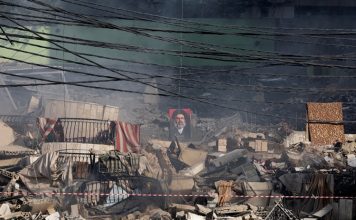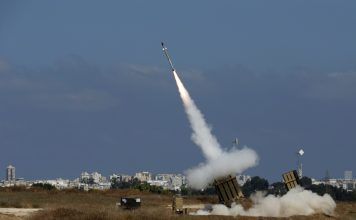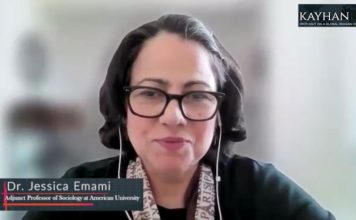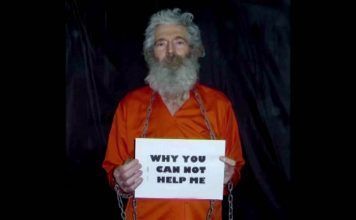
The suppression of women in Iran, most recently through the nationwide ‘Noor Project’ aimed at enforcing the mandatory hejab, has garnered significant attention both domestically and internationally. The Noor Project was launched on April 13 and has now entered its second week, with the involvement of many official and unofficial officers of the Islamic Republic across the country.
The Noor Project is just one component of a broader strategy for enforcing the mandatory hejab (Islamic dress code) in the Islamic Republic. Concurrently, another initiative, the Hejab and Chastity Scheme, is being piloted. These initiatives have provided a platform for elements within the regime to target and intimidate women and girls in public spaces, such as streets and alleyways. They also absorb a colossal proportion of the government budget and of the country’s resources.
On July 6, 2022, Iranian President Ebrahim Raisi ordered the Supreme Council of the Cultural Revolution (SCCR) to enforce the Hejab and Chastity Law. Mr. Raisi accused the “enemies of Iran and Islam” of using global TV channels and social media to “spread corruption and target cultural and religious principles.”
While the hejab became compulsory after the 1979 Islamic Revolution, the Supreme Council or SCCR, which adopted the Hejab and Chastity measure in 2005, is not a legislative body and cannot pass any laws.

The enforcement of the mandatory hejab on Iranian women has resulted in significant direct and indirect financial costs, diverting a substantial budget that could otherwise be allocated towards the advancement and prosperity of the nation and the well-being of its population.
The involvement of 26 government institutions in advancing these goals underscores the Islamic Republic’s comprehensive approach towards developing and propagating the “chastity and hejab” culture. These institutions are:
- The Ministry of Culture and Islamic Guidance
- The Ministry of Commerce
- The Islamic Republic of Iran Broadcasting (IRIB)
- The Law Enforcement Command of the Islamic Republic of Iran (FARAJA)
- The National Youth Organization
- The Islamic Development Organization
- The Ministry of Education
- The Ministry of Economic Affairs and Finance
- The Ministry of Science, Research and Technology
- Department of Women and Family Affairs
- The Ministry of Information and Communications Technology
- The Physical Education Organization
- Municipality
- The Ministry of Health and Medical Education
- The Enjoying Good and Prohibiting Evil HQ
- The State Welfare Organization
- The Ministry of Foreign Affairs
- The Ministry of Labor and Social Affairs
- The Majlis (Iranian Parliament)
- The Ministry of Interior
- The Management and Planning Organization (MPO)
- The Judiciary
- The Ministry of Roads and Urban Development
- The Cultural Heritage, Handicraft and Tourism Organization
- The Basij Force (volunteer militias)
- Iranian National Housing
A portion of the budget allocated to these entities annually goes towards implementing and enforcing mandatory hejab schemes instead of the country’s development. The lack of transparency around these expenditures further exacerbates the issue, as citizens are uninformed about the specific amounts spent on such projects.
In a report titled “How Much the Islamic Republic Spends Annually on Enforcing Mandatory Hejab?” published on May 17, 2023, Iran Open Data (IOP) estimated that it cost the state between $936 million and $1 billion (at the exchange rate of 427,000 rials to a U.S. dollar in May 2023) to implement and enforce the mandatory hejab.
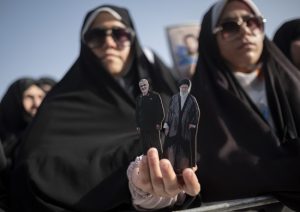
The IOP report reveals a concerning trend. The expenses related to hiring personnel to monitor the mandatory hejab, drafting instructions, advertising, and creating a “suitable work environment for women” are covered by the government’s budget.
“If institutions, banks, and businesses associated with the government were theoretically to allocate one-thousandth of their expenses to enforce the mandatory hejab in compliance with the SCCR’s guidelines, the total budget spent on the mandatory hejab in 2023 would amount to $117 million,” the IOP report said.
In the same month that IOP’s report came out, Alireza Zakani, Tehran’s mayor, announced the deployment of 400 municipal security personnel known as “hejabban” (Hejab Guardian). These all-female forces patrol public areas, particularly subway stations, and issue verbal warnings to women not dressed according to the mandatory hejab standards. The measure further solidified the state’s commitment to enforcing the mandatory hejab.
According to Mohammad Hossein Taheri-Akerdi, the secretary of the Enjoying Good and Forbidding Evil HQ (a state board for moral propriety), there are currently 2,850 Hejab Guardians in the country. The monthly salary of a Hejab Guardian is reportedly around $192 (the current exchange rate is 627,500 rial to a U.S. dollar). They also receive job benefits, including vouchers for essential goods.
If the average monthly income of each “Hejab Guardian,” including benefits and insurance, is approximately $223, then the monthly cost of employing these monitors, who solely issue “verbal warnings” to girls and women, amounts to $635,550. This calculation is based on a maximum number of 2,850 guardians, the figure provided by Taheri-Akerdi.
There have been reports about Hejab Guardian units in various other major cities besides Tehran. However, there are no media reports about them.
According to Taheri Akerdi, President Raisi initiated the Noor Project, which is being implemented by the Ministry of the Interior in Iran.
“In May 2023, at the order of the President, the ‘Chastity and Hejab HQ’ was established. Ahmed Vahidi, the Minister of the Interior, was appointed its director. The ‘Chastity and Hejab HQ’ is among several institutions functioning under its auspices,” Taheri Akerdi explained.
“The responsibilities related to the hejab at our headquarters were transferred to the ‘Chastity and Hejab HQ’ after its establishment. So far, there has been no request from this organization for us to be involved with the Noor Project,” he added.
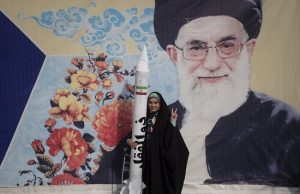
In the budget bill of 2022-23, the government initially proposed a budget of $1.8 billion for the Enjoying Good and Prohibiting Evil HQ. However, the parliament increased this amount significantly by $1.18 billion, resulting in a total allocation of $2.9 billion for the organization. The government’s current proposal aims to double the funds allocated for the Enjoying Good and Prohibiting Evil HQ, showing a substantial increase in financial support for the organization.
The Hejab and Chastity scheme, developed by the Iranian judiciary over a year ago, has been the subject of extensive discussions between the parliament and the Guardian Council. After gaining cabinet approval, the bill was sent to the Majlis for consideration. The parliament prioritized the bill but faced challenges from the Guardian Council, leading to prolonged deliberations. Lawmakers eventually voted last summer in favor of trial implementation of the Hejab and Chastity scheme for three years.
The Majlis has entrusted the Plan and Budget Organization to oversee the implementation of the Hejab and Chastity scheme, a responsibility that carries significant financial implications. The funding for this initiative will be drawn from a bill with an operational deficit exceeding $4.7 billion, a financial challenge of considerable magnitude. With expenditures surpassing revenues, this deficit has created uncertainty and raised concerns about the feasibility of achieving these financial targets.
The theoretical model of the Hejab and Chastity scheme proposes that the revenue collected from fining “mandatory hejab violators” will be deposited in the treasury under annual budget laws. The primary purpose of this revenue is to address urgent social issues such as divorce, child labor, single mothers, and related concerns, presenting a potential remedy to these societal challenges.
The cost of imposing hejab on women includes various expenses that must be allocated from different sectors. According to IOP, if 10 percent of the budget of the state propaganda apparatus, 5 percent of the budget for the police force, and two-hundredth of the budget of educational institutions and public services are used to implement the Hejab and Chastity initiative proposed by the SCCR, the total cost for the 26 institutions responsible for executing this scheme would amount to $142.5 million.
The IOP report highlighted that the female population of Iran over the age of 7 is required to spend nearly half a billion dollars annually on Islamic attire to adhere to the mandatory hejab.
In Iran, many institutions, irrespective of their assigned goals and remits, allocate a portion of their budget to enforce the mandatory hejab, including the Islamic Development Office of the Qom Seminary and the Islamic Development Organization, whose current budgets are $12.3 million and $129.8 million, respectively.
Besides the Hejab Guardians and the police, the volunteer plainclothes Basijis — known as ‘fire at will’ because of their reputation for indiscriminately shooting people with impunity — also terrorizes the female population.
The budget allocated to the IRGC and its affiliated Basij force has significantly increased compared to previous years. Specifically, the government has earmarked $3.3 million to enhance the Basij force’s defense and security capabilities. This allocation reflects a continued trend of bolstering the resources available to the IRGC and its associated organizations.
A further notable development is the substantial increase in funding for the FARAJA, which operates within a different tier than the Basij force. FARAJA’s budget has surged 23 percent this year, reaching £1.2 billion.
The IRGC has recently made significant announcements regarding the repurposing of its military assets, particularly about enforcing specific social and religious practices within Iran. One notable development was establishing the “Safiran-e Mehr” or “Mehr Ambassadors” special units tasked with enforcing the mandatory hejab in public spaces.
Images shared on social media reportedly show members of the Fatemiyoun Brigade patrolling city streets in Iran. The Fatemiyoun Brigade is a Shia Afghan militia that was initially formed, funded, trained, and equipped by the IRGC to fight in Syria. However, recent evidence suggests that this group is now being used domestically within Iran to patrol streets and enforce mandatory hejab, signaling a shift in its operational focus.
The current state budget proposes $16 million to help clerics with their cost of living, as there are no jobs available for seminary graduates in the state, leading some to join Jihadi groups or the Enjoying Good and Prohibiting Evil Headquarters which are a drain on public funds.
The Hejab Guardians, Mehr ambassadors, and all those who receive a substantial portion of the national budget and resources intended for citizens can be identified as individuals who support the Islamic Republic and its ideology. These groups reap significant financial benefits from the government, making it clear they align with, or at least tolerate, the regime’s beliefs.




